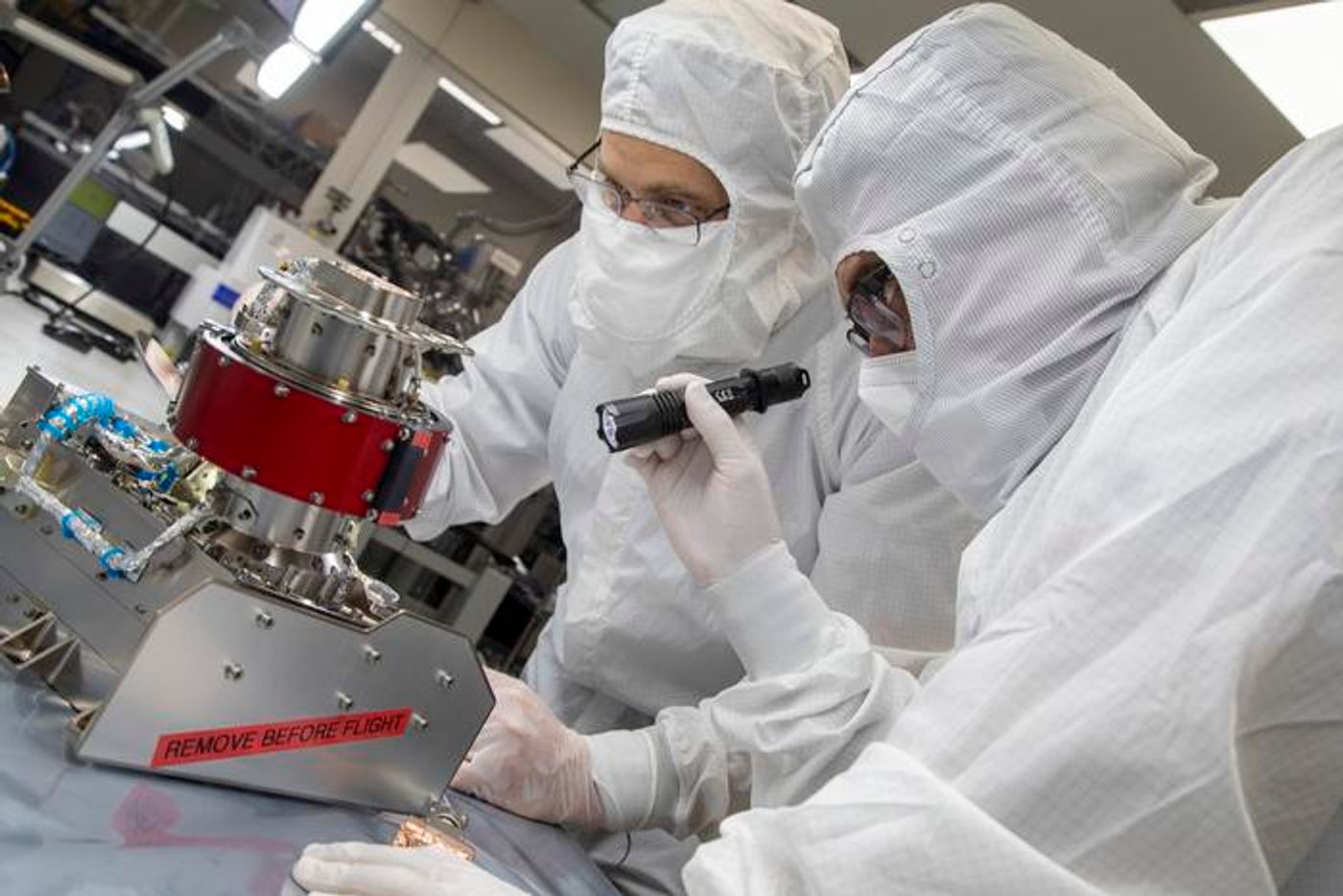Unmasking Origin of Lunar Swirls: MAPS Instrument to Examine Solar Wind and Moon Interaction
The Moon is getting another instrument to explore its vast history as the Magnetic Anomaly Plasma Spectrometer (MAPS) instrument developed by the Southwest Research Institute (SwRI) has been delivered to NASA as part of the agency’s Lunar Vertex investigation, which is slated to begin in 2024. MAPS will be incorporated onto a lunar lander whose goal is to examine the Reiner Gamma region on the nearside (Earth-facing side) of the Moon. This region has sparked interest from the scientific community for several decades as it is known to possess a local magnetic field, resulting in swirls of dark and light lunar regolith being observed across the Moon’s surface.
Scientists at the Southwest Research Institute are preparing the MAPS instrument for delivery and incorporation into a lunar lander as part of NASA’s Lunar Vertex investigation. MAPS will collect sensitive, high-resolution data about the lunar surface, providing greater than four times the resolution of lunar orbiting spacecraft, while weighing just 11 pounds (five kilograms) and drawing under 6 watts of power. (Credit: Southwest Research Institute)
The SwRI-developed MAPS instrument will examine puzzling swirls on the lunar surface hypothesized to be linked with localized lunar magnetic fields residing in the Reiner Gamma region. (Credit: NASA)
“MAPS is the latest generation of the spectrometer that originally flew on ESA’s Rosetta mission to comet 67P/Churyumov-Gerasimenko,” said Dr. Jörg-Micha Jahn, who is a scientist at the University of Texas at San Antonio-SwRI Space Physics Graduate Program, and the lead investigator for MAPS. “We will investigate how the influx of the solar wind interacts with the localized magnetic fields and how it could affect features on the lunar surface. The spectrometer will help us determine if charged particles delivered by the solar wind even make it to the surface of the Moon within a magnetic anomaly.”
While the Earth possesses a global magnetic field due to the rotation of the molten iron in its liquid outer core, the internal geologic processes of the Moon is believed to have ceased approximately one billion years ago. This makes magnetic field activity within Reiner Gamma even more intriguing to explore, as it can offer insights into not only our Moon, but other worlds throughout our solar system that also don’t possess atmospheres, as well.
Weighing only 11 pounds (5 kilograms) and requiring under 6 watts of power, MAPS will offer the first in situ examination of Reiner Gamma that orbiting lunar spacecraft are not able to provide, including images with four times the resolution. Additionally, MAPS will also provide scientists with greater insight into space weathering, which is when the solar wind erodes the surfaces of rocky planets, moons, comets, and asteroids so much that its regolith turns darker in color over time.
“I find this project to be very rewarding personally,” said Dr. Jahn. “When you work in a field as esoteric as space plasma physics, it is nice to be able to point to something as familiar as the Moon and to know that an instrument you developed will be up there helping us to understand Earth’s closest neighbor. We are looking for clues to unravel the magnetic mysteries of the Moon and what they tell us about its formation and evolution.”
What will MAPS teach scientists about the Moon and its localized magnetic field at Reiner Gamma in the coming years and decades, and how will this better inform scientists about space weathering on other worlds, as well? Only time will tell, and this is why we science!
Sources: Southwest Research Institute, Johns Hopkins University Applied Physics Laboratory, Wikipedia, NASA, EurekAlert!, NASA (1), Universities Space Research Association, Wikipedia (1)
As always, keep doing science & keep looking up!










